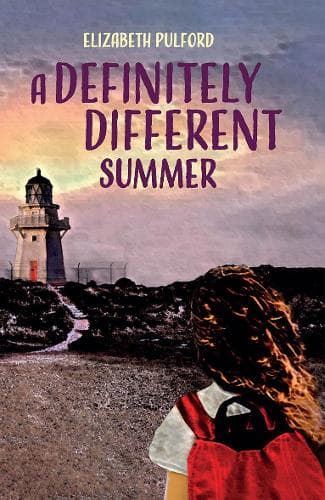Review: A Definitely Different Summer
Reviewed by Link Pickering
It’s the Christmas holidays and 12 year old Kathleen O’Donnell - affectionately nicknamed Cricket - fears she’s going to be bored out of her mind because she’s heading with her parents to uninhabited, isolated Jacob’s Island for the whole summer.
That’s means no one to play with and, perhaps worst of all, no power which means … no technology! She can’t imagine how she’s going to survive without a signal for her phone or kids her age. But boring life on the run-down island quickly turns around when she discovers the tragic shipwreck that named the island and spooky things begin to happen.
Elizabeth Pulford, who’s written more than 60 books (mostly for children and young adults), combines the story of a tragic based-on-fact shipwreck with an exciting mystery adventure to craft a tale of unexpected friendship, secret clubs and adventures. It’s the sort of pacey content most 8 - 12-year-olds - the book’s target readership - will easily relate to.
The Christmas aspect of the story is somewhat forgotten after it is mentioned in the beginning, which may be disheartening for some readers. I think that Christmas Day would have fit nicely into the narrative, with more opportunities for adventure and new environments within the novel.
That said, the fast-paced storytelling and short chapters are sure to keep younger readers thoroughly engaged, as they discover Cricket’s adventures on the island. Pulford’s eccentric characters and unique settings are brought to life in the black and white illustrations, scattered throughout the pages, by Mike Codling.
The basis in a real story creates a chance to learn more about our history and may inspire readers to read about national tragedies especially maritime ones. As an island nation, Aotearoa New Zealand has had more than its share of shipwrecks like the SS Tararua, which crashed off the coast of Invercargill in 1881, taking the lives of 131 people to become our worst ever maritime disaster but how many people have heard of it today?
The passenger steamer was sailing from Dunedin to Melbourne via Bluff and Hobart on April 29 1881 when the ship’s captain failed to establish his correct position in the early hours of the morning, taking too westerly a course and hitting a reef that had also been missed by a sailor meant to be on look-out duties. Only 20 of the 151 passengers survived; the disaster led to a decree that boats should carry enough lifebelts for all passengers and the building of a lighthouse at Waipapa Point. One of the last wooden lighthouses built in Aotearoa, it was staffed from 1884 - 1975 and now operates with an LED beacon.
Pulford was one of those who learned at school about the tragedy and was inspired after a school trip to an Invercargill museum where she read about the SS Tararua. Just goes to show what paying attention during a school trip can spark!
Reviewed by Link Pickering
